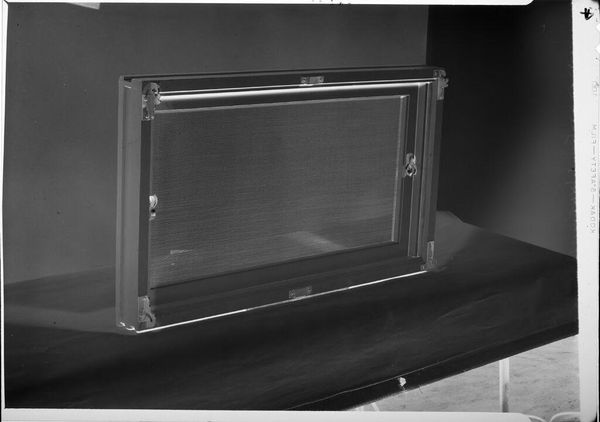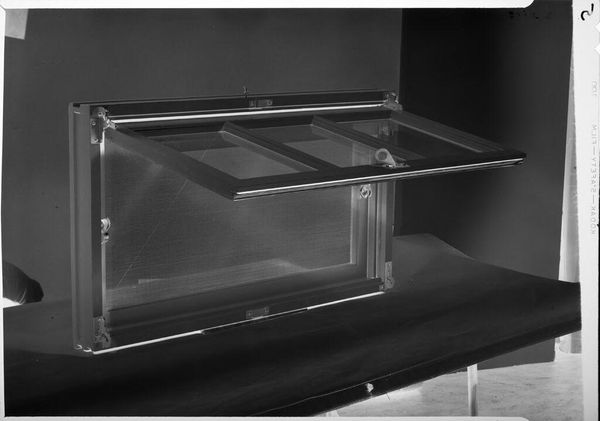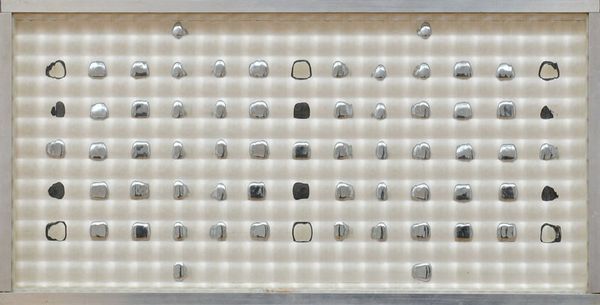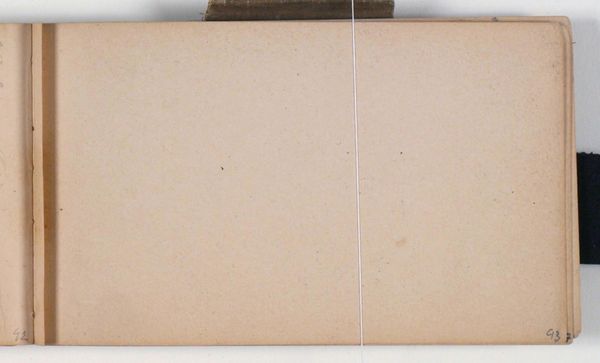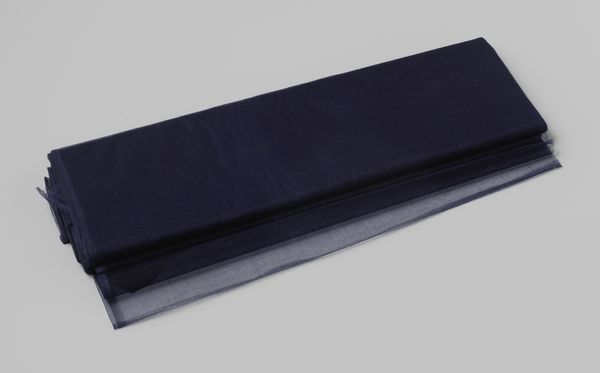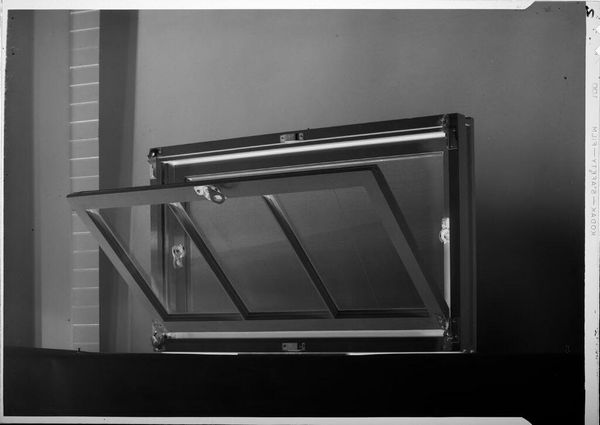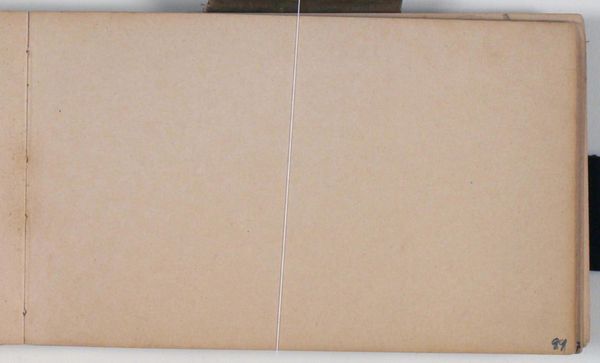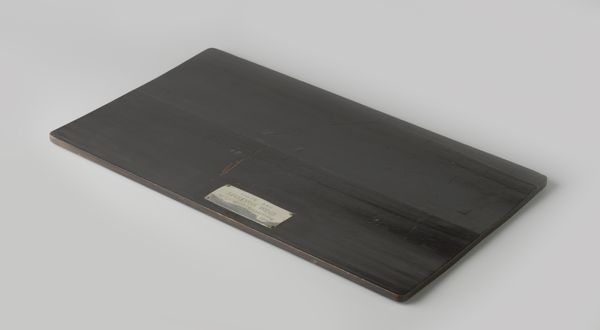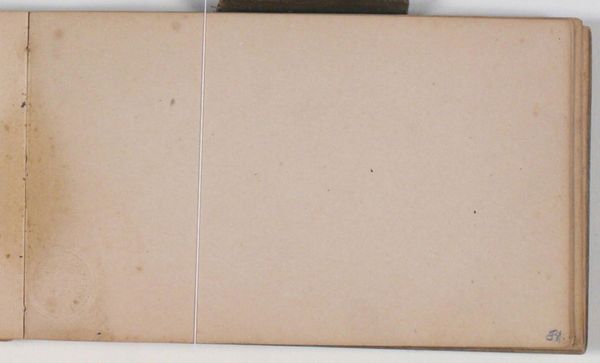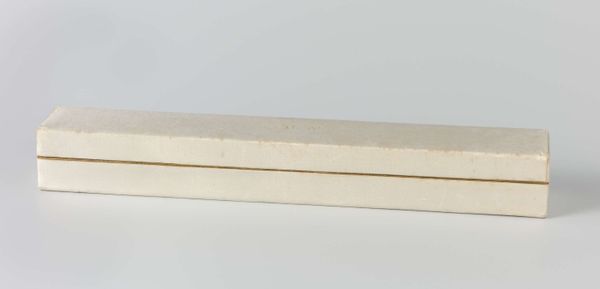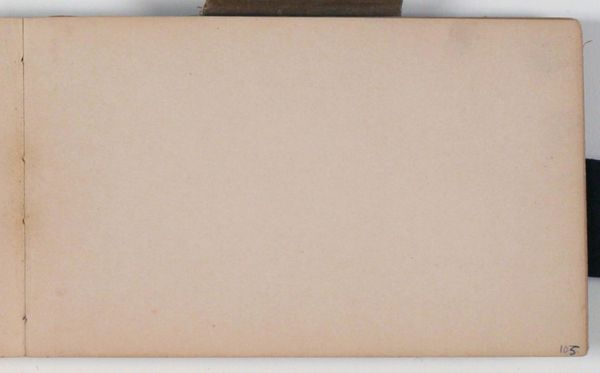
print, woodblock-print
# print
#
landscape
#
ukiyo-e
#
abstract
#
woodblock-print
#
geometric
Copyright: Kiyoshi Saito,Fair Use
Curator: This striking woodblock print is attributed to Kiyoshi Saito, titled "Untitled (Abstract wood block print of field with stones)." While undated, it resonates with the visual language he developed. What’s your first take? Editor: Quiet, very still. It’s so reduced, these almost geometric forms...it makes me think of Zen gardens and a very contemplative kind of space. Curator: Saito, like many artists of his time, navigated a complex socio-political landscape. After the Second World War, there was a renewed interest in traditional Japanese aesthetics even as artists were grappling with Western abstraction. Do you see that tension here? Editor: Definitely. The composition, the horizon line – it recalls traditional Japanese landscapes. But the simplification… those stones, they could be mountains, clouds, almost archetypal forms that evoke an essential Japanese spirit. There is such emotional and psychological weight in such seemingly spare symbolism. Curator: That’s insightful. Saito embraced the Sosaku-Hanga movement which advocated for artist-designed, carved, and printed works. The artist has control. And these bold black planes broken up by horizontal bands? Very daring in their starkness. Editor: That intense black…it almost feels like a psychological space rather than a literal field. It's a space of introspection, perhaps of solitude. The stones, so few, seem monumental in this void. It hints at something both familiar, but alien, too. I see connections with Shinto and rock veneration Curator: Saito exhibited internationally, including at the Sao Paulo Biennial, really contributing to the post-war perception of Japan. It makes me wonder what his western audience, would have brought to an image like this? Editor: Perhaps they would read it through their own frameworks – modernism and abstraction. The beauty of art lies, I think, in these dialogues between different interpretations across cultures. What does this say to you? Curator: The way Saito balances tradition and abstraction reveals a post-war negotiation, in Japanese art circles. It speaks of a nation trying to reconcile itself with the present moment. A bold reminder of how socio-cultural forces shaped this artist's individual aesthetic. Editor: It stays with me.
Comments
No comments
Be the first to comment and join the conversation on the ultimate creative platform.
